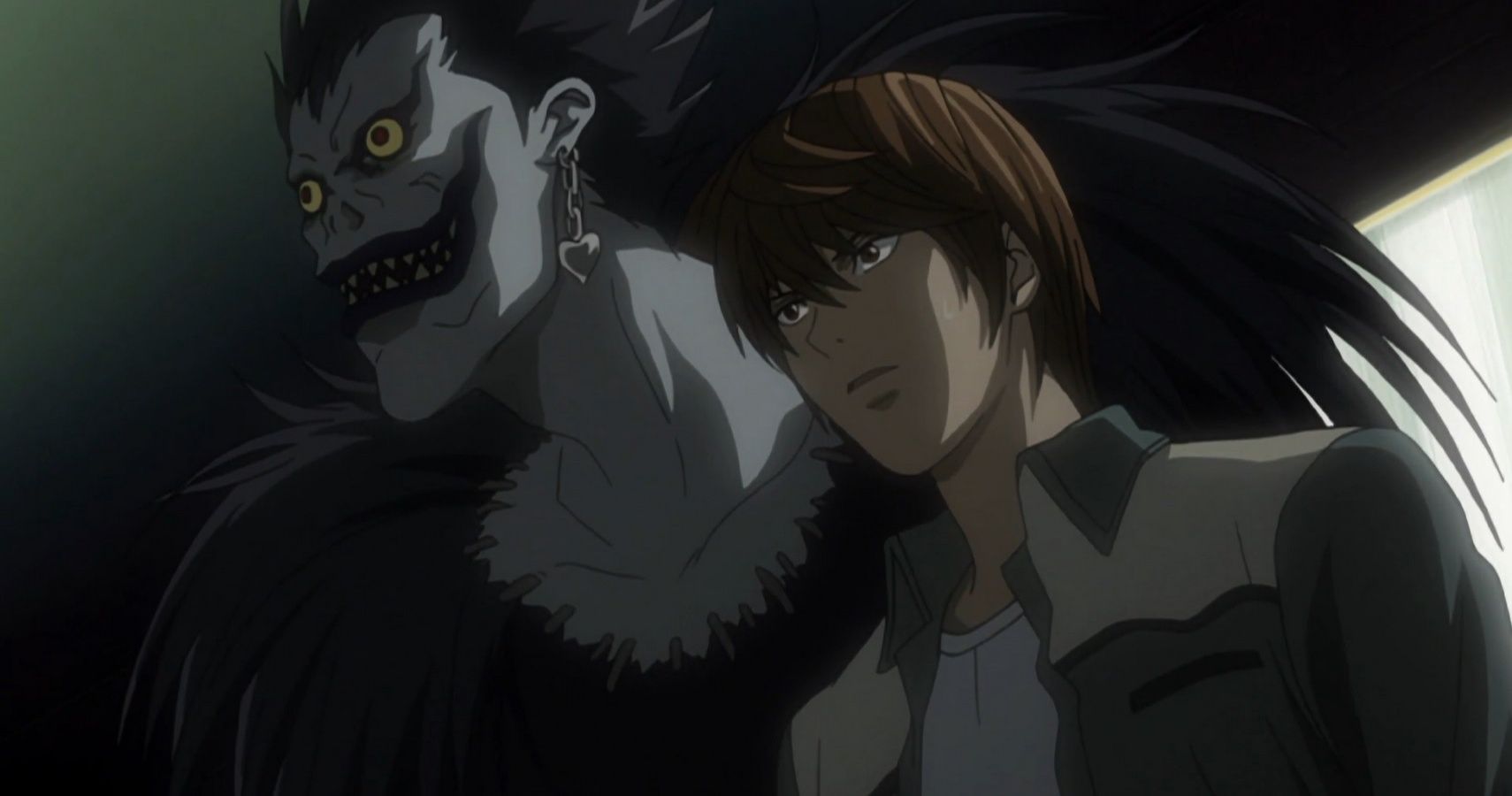Table of Contents Show
The anime Death Note (2006-2007; Tetsurō Araki) is held in high regard by many fans and is even ranked number one on IMDB’s list of top fifty anime’s of all time. This is largely due to the anime’s compelling story and characters. Characters such as Light Yagami and L, who happen to be extremely similar, nurture the storyline, and their dynamic is what makes the anime so captivating. Throughout the series, the audience is kept on the edge of their seats as it is anyone’s game, and it is difficult for the viewer to know who to root for. As Light’s character transforms, Death Note captures the essence of the butterfly effect;
“By which small changes in initial conditions can lead to large-scale and unpredictable variation in the future state of the system”
(( Merriam Webster. “butterfly effect.” Merriam-webster.com, 24 November 2021. )).
With the butterfly effect in mind, along with Light and L’s similarities, it is reasonable to assume that had L found the note first, he would’ve fallen down the same path as his enemy.
A Brief Synopsis Of Death Note
Death Note, created by Tsugumi Ohba, was originally run as a manga series in the weekly anthology magazine Weekly Shonen Jump from December 2003 to May 2006 (( Wikipedia. “Death Note.” En.wikipedia.org, 8 November 2021. )). The beloved and twisted crime thriller would serve as a blueprint for several adaptations, including; spinoff mangas, novels, T.V. films, live-action films, and even a musical. However, the primary focus will be on the 2006-2007 anime adaptation of Death Note. This adaptation follows a similar storyline to its predecessor but with an emphasis on Light’s experience as Toshiki Inoue, the series organizer, addresses that:
“Light’s presence was ‘the most compelling’ aspect; therefore the adaptation chronicles Light’s thoughts and actions as much as possible. Inoue noted that to best incorporate the manga’s plot into the anime, he tweak[ed] the chronology a bit and incorporated flashbacks that appear after the openings of the episodes…”
(( Wikipedia. “Death Note.” En.wikipedia.org, 8 November 2021. )).
As the story goes, Light Yagami, a brilliant and hardworking high school student, comes into contact with the death note. The death note is a notebook dropped into the human realm by Ryuk, the shinigami or death god. The note details a whole list of rules, but the most important would be that the human’s name written in the note shall die. Furthermore, the shinigami, or original owner of the note, and the human currently in possession will be linked until the human dies.
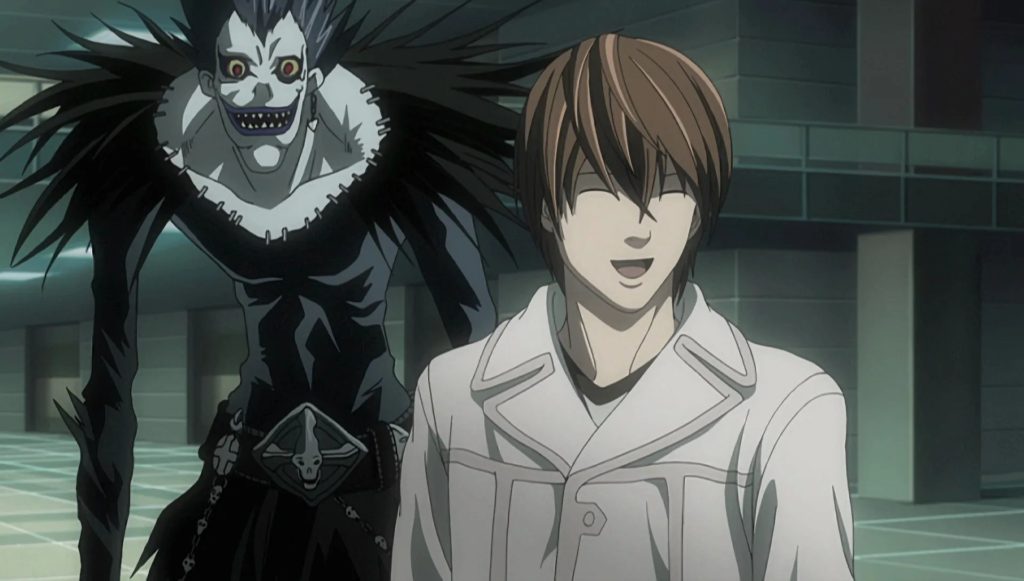
With the death note in his possession and Ryuk on his side, Light begins his killing spree. Initially, Light intends to rid the world of dangerous criminals. However, his ego and outside influences quickly get the better of him. He begins to move under the alias Kira (meaning killer) and, unfortunately, murders plenty of innocent people. The pressure amplifies when expert investigator Ryuzaki (who hides behind the alias “L”) gets involved in the Kira case; commencing a most captivating battle of wits.
Light Yagami
Light Yagami is the main character of this series, and there are reasons for it. Early in the anime, Ryuk explains to Light that regardless of his preconceived notions, the death note found him by chance. It is pretty safe to say that if the death note found anyone else, the storyline would probably be a lot less interesting. Regardless, it’s essential to look at Light’s character prior to obtaining the death note to gather a true sense of his character as a human. Imagine Light Yagami if he never stumbled across this power.
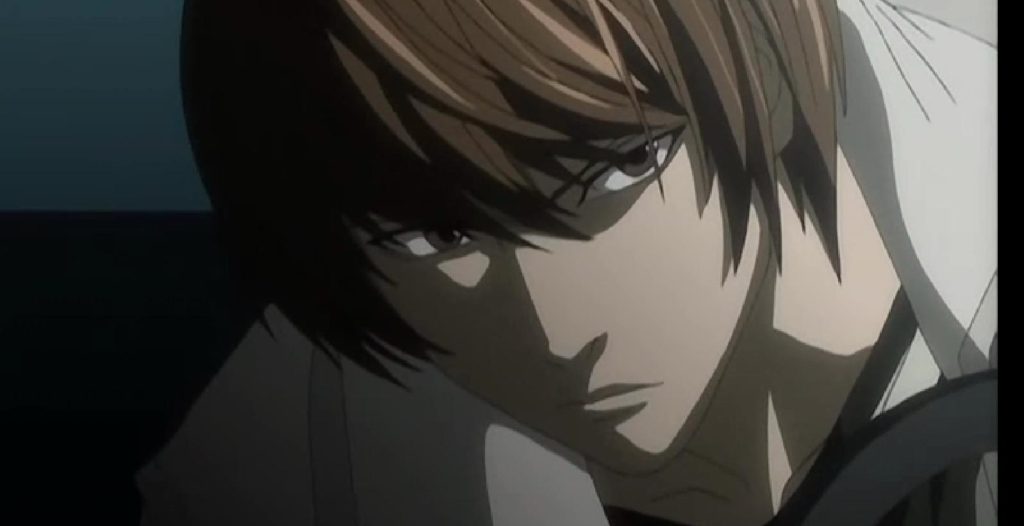
Through brief scenes in the first episode and the time Light spent away from the death note (erasing his memory of the book entirely), the audience can examine his character further. Light Yagami is a brilliant and seemingly well-rounded young man. He is at the top of his class, helps his little sister with homework, and aims to honor his family. He even becomes a pretty big asset in the Kira investigation in a purposeful manner. Yet, in parallel, the audience can’t deny his obvious sociopathic remarks and tendencies. In the first episode alone, Light is seen referencing the world and certain people in it as scum. So it’s safe to assume that also plays a part in his antisocial behavior. Later, when he begins using the note, it seems justified at times. He tries to kill genuinely bad people with the intention of making the world a safer place for all. So, how did he mutate so quickly into the spine-chilling ‘god’ Kira?
“L” Ryuzaki
Ryuzaki, similar to Light, is incredibly smart though he is a bit quirky. At the young age of twenty-five, he is spearheading the Kira investigation in hopes of adding it to yet another of his solved cases. From the start of Death Note, Ryuzaki’s alias “L” appears to be a fantastic detective, and one could assume a pretty morally correct guy. Think again… while Ryuzaki’s moral slip-ups come nowhere close to Light’s, it’s worth noting that Ryuzaki is eight years older than Light. Moreover, he is a detective who is expected to do the right thing. While the viewer can’t discount the massive efforts put into catching Kira, Ryuzaki has found himself in a morally gray area more than once.
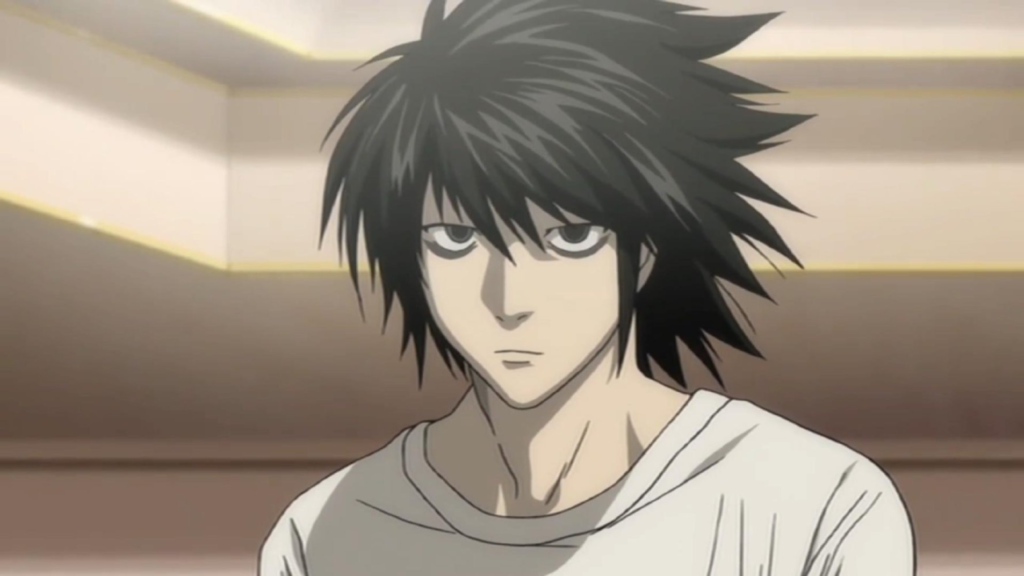
Whether it be bugging the homes of Japanese citizens or discounting criminals in exchange for their work, Ryuzaki isn’t always playing by the books. However, it isn’t hard for the viewer to accept that he only carries out these acts to catch a mass murderer. In addition, Light’s ego is a more significant problem as he aspires to be the god of a new world, but Ryuzaki’s similarly prominent ego gets him into trouble as well. There were a few times when lives were lost due to this. For instance, as a result of Ryuzaki’s own biases, he spent more time looking into Light rather than conducting a proper investigation. All of this resulted in innocent people losing their lives with the goal from the start being quite the opposite(( CBR. “Death Note: 10 Ways L Ruined His Likability.” CBR.com, 2 November 2021. )). Ultimately, it seems as though Ryuzaki’s character resembles a future version of Light, maybe the future he would’ve had if not for encountering the death note. Light resembles a young version of Ryuzaki. It would be reasonable to argue that they could’ve ended up as coworkers or even friends considering their similar personality types, goals, and motivations. To the same point, if Ryuzaki had picked up the death note, originally instead of Light, who is to say that the roles wouldn’t have been reversed?
Ryuk’s Influence
As previously established, Light and Ryuzaki, on a base level, are almost eerily similar. When Light acquires the death note, his life is set on a drastically different path than originally intended. In a flashback, viewers are able to see Light’s realization of the consequences of writing in the notebook. He is panicked and flustered before he begins to justify his actions, and even then, he is smart enough to have realized that to be granted this power, he is probably paying with his life in some way. He then decides to use the death note for good, claiming he will rid the world of evil.
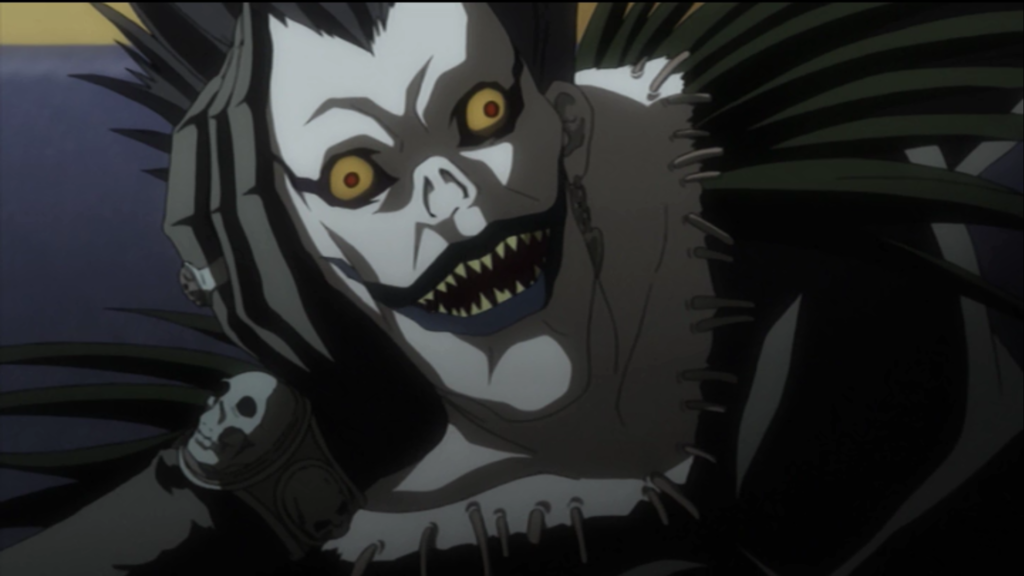
Until the Shinigami, Ryuk enters the picture, Light starts to spin out of control. Ryuk claims to remain neutral, on neither Light nor Ryuzaki’s side, though he is a glutton for chaos at his core. At times helping Light or speaking in his ear, it wouldn’t be unlikely that Ryuk had some, if not a significant influence on Light’s decision-making. It is even notable that the presence of the death note itself had a considerable impact on Light’s grip on reality and moral reasoning. Eventually, he gets sloppy, whether it be due to his ego, fear of getting caught, or the influence of Ryuk Light ends up losing his initial motivations to make the world a better place. Instead, he becomes more focused on his god-like image. In truth, it’s hard to imagine Light ever trying to pull something like the Kira operation off. Without the help of the death note and considering his intelligence and awareness of the risks, it truly seems unlikely.
Muddled Morals
Death Note is short in comparison to some of the larger and equally popular animes. Though, the writers were still able to fit many complexities into their story and characters. Despite their eight-year age gap, Light and Ryuzaki’s similarities are uncanny. They are both brilliant and evenly matched when it comes to outsmarting each other. Although they use many different resources, they both use them well. They also share similar flaws; in Ryuzaki’s own words,
“He is childish and hates losing… I am also childish and hate losing”
(( “Unraveling.” Death Note, season 1, episode 6, Madhouse, 7 Nov. 2006. Hulu. )).
It is worth noting that with how similar Light and Ryuzaki are, if the death note had fallen into Ryuzaki’s hands first, the roles could have been reversed. The story of Ryuzaki, Light Yagami, and the death note is a wonderful example of how influence and intention can work so hard against each other at times. In other words, even with the purest intentions, outside forces are always present with the ability to deter you from your original goal.

Light and Ryuzaki both started with pure intentions, but with the pressure they inflicted upon each other, i.e., trying to catch or evade being caught as Kira, they both made mistakes that cost people their lives. Just as well, one can’t forget the added pressures that would come along with having a shinigami bonded to you for life or the entire justice system relying on your next call. Regardless of original intent, outside influences managed to muddle both characters’ moral ground.
